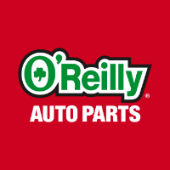-
Welcome to Auto Parts Forum
Whether you are a veteran automotive parts guru or just someone looking for some quick auto parts advice, register today and start a new topic in our forum. Registration is free and you can even sign up with social network platforms such as Facebook, X, and LinkedIn.
Permatex Gasket Sealers and Applications
-
Similar Content
-
- 0 replies
- 37 views
-
- 0 replies
- 29 views
-
- 0 replies
- 26 views
-
- 0 replies
- 28 views
-
- 0 replies
- 28 views
-
-
Similar Topics
-
By Counterman
link hidden, please login to view introduced six additions to its Coolant/Antifreeze lineup for North American and European passenger and light-duty vehicles. AISIN’s Extended-Life, prediluted antifreeze/coolants are “meticulously designed to meet the rigorous demands of North American vehicles,” the company said. They are available in color-coded formulations – such as purple specifically engineered for Stellantis and Chrysler vehicles; yellow for Ford Motor Co.; and orange for Chrysler, Ford, and General Motors vehicles – and including any internal combustion engines as well as electric and hybrid vehicles equipped with indirect cooling battery systems.
In addition to North American applications,
link hidden, please login to view has also introduced three European antifreeze/coolants. Available in color-coded formulations, including pink for European applications that include, Alfa Romeo, Audi, Ferrari, Fiat, Jaguar, Land Rover, Mini, Porsche, Saab, Volvo, and Volkswagen; blue that includes several of the applications mentioned above with the addition of BMW, Mercedes-Benz, Sprinter; and a third color, violet, for newer European vehicles. AISIN coolants are tested to meet and exceed industry standards and eliminate the need for supplemental coolant additives and chemically charged filters, making them the ideal choice for internal combustion engines, electric, hybrid, and plug-in hybrid technologies, according to Larrow Kaufman, senior sales manager, Aftermarket Division, AISIN World Corp. of America.
“While the market continues to benefit from use of our current line of coolants, many have asked when we’ll offer full coverage for all makes and models,” says Kaufman. “We listen carefully to our customers and, as a result, have greatly expanded our coverage to meet their needs. We also provide our customers with convenience and a simpler decision-making process by offering the right product for the right application, with exceptional corrosion protection, compatibility, and shelf life. Bottom line: AISIN coolants are trusted by automotive professionals.”
The post
link hidden, please login to view appeared first on link hidden, please login to view.
link hidden, please login to view -
By Counterman
Applications are being accepted for the Federated Car Care Scholarship program.
Interested students should complete and submit their applications at
link hidden, please login to view by March 31. The Federated Car Care scholarships are funded by Fisher Auto Parts in memory of Art Fisher, founder of Federated Auto Parts and the Federated Car Care program. Qualified candidates should specify “Federated” on their application when applying online.
Administered by the University of the Aftermarket Foundation (
link hidden, please login to view), the scholarships will be awarded to employees and children of active Federated Car Care Center members attending a two- or four-year accredited college, an ASE/NATEF-certified post-secondary automotive, heavy-duty or collision technician training program or any licensed and accredited vocational school. Students graduating from high school in 2024 and heading to any of these post-secondary programs also are eligible. “It is a privilege for us to once again provide scholarship opportunities to the children and employees of Car Care members, assisting them in furthering their education,” said Bo Fisher, chairman and CEO of Fisher Auto Parts. “The University of the Aftermarket Foundation’s AutomotiveScholarships.com website streamlines the application process. We urge all interested candidates to submit their applications by March 31 and look forward to awarding Federated Car Care scholarships to another group of deserving young men and women for the 2024-25 academic year.”
Federated is one of more than 30 other organizations awarding scholarships on
link hidden, please login to view. As an added benefit for students who apply at this site, each completed application will be considered by every scholarship where the candidate meets the qualifications. The post
link hidden, please login to view appeared first on link hidden, please login to view.
link hidden, please login to view -
By Counterman
The University of the Aftermarket Foundation is accepting applications for hundreds of scholarships for the 2024-2025 academic year.
Scholarships are available to students training to become automotive, heavy-duty or collision repair technicians or those studying engineering, business, IT/cybersecurity or other courses in preparation for a career in the motor-vehicle aftermarket.
Graduating high school seniors, full-time post-secondary students and former recipients are welcome to apply.
Each completed application is considered for all scholarships where the student meets the qualifications, the foundation noted.
The application deadline is March 31.
To apply, visit
link hidden, please login to view. The post
link hidden, please login to view appeared first on link hidden, please login to view.
link hidden, please login to view
-




Recommended Posts
Join the conversation
You can post now and register later. If you have an account, sign in now to post with your account.
Note: Your post will require moderator approval before it will be visible.